
Detroit Lakes is a city in the State of Minnesota and the county seat of Becker County. The population was 8,569 at the 2010 census. Its unofficial population during summer months is much higher, estimated by citizens to peak at 13,000 midsummer, due to seasonal residents and tourists.
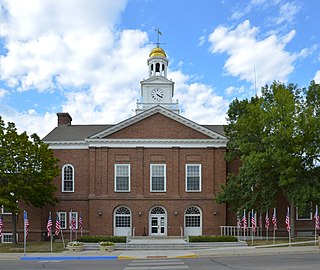
Fergus Falls is a city in and the county seat of Otter Tail County, Minnesota, United States. The population was 13,138 at the 2010 census.

Æolian-Skinner Organ Company, Inc. of Boston, Massachusetts was an American builder of a large number of pipe organs from its inception as the Skinner Organ Company in 1901 until its closure in 1972. Key figures were Ernest M. Skinner (1866–1960), Arthur Hudson Marks (1875–1939), Joseph Silver Whiteford (1921-1978), and G. Donald Harrison (1889–1956). The company was formed from the merger of the Skinner Organ Company and the pipe organ division of the Æolian Company in 1932.
Ernest Martin Skinner was one of the most successful American pipe organ builders of the early 20th century. His electro-pneumatic switching systems advanced the technology of organ building in the first part of the 20th century.
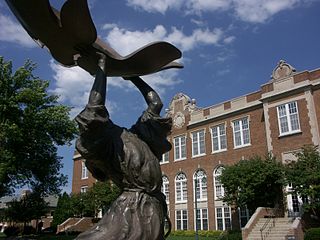
Paul T. Granlund was an American sculptor. His creative career spanned more than 50 years and more than 650 different works. Most of his work is figurative and made from bronze. His patrons included colleges, hospitals, Lutheran churches, and other institutions.

Mariners' Church of Detroit is a church with worship services adhering to Anglican liturgical traditions located at 170 East Jefferson Avenue in Downtown Detroit, Michigan. It was founded in 1842 as a special mission to the maritime travelers of the Great Lakes and functioned as a parish of the Episcopal Diocese of Michigan until 1992, when the Michigan Court of Appeals ruled it was incorporated as an independent congregation. The church was listed on the National Register of Historic Places in 1971. The church is now part of the REC Diocese of Mid-America within the Anglican Church in North America.

Holy Rosary Cathedral at 13th Avenue and Garnet Street in Regina, Saskatchewan, is the cathedral church of the Roman Catholic Archdiocese of Regina.

Austin Organs, Inc. is a manufacturer of pipe organs based in Hartford, Connecticut. The company is one of the oldest continuously-operating organ manufacturers in the United States. The first instruments were built in 1893 with the Austin Patent Airchest, and many remain in fine playing condition to this day.
The Felgemaker Organ Company was a manufacturer of pipe organs based out of Erie, Pennsylvania, in the late 19th and early 20th centuries.
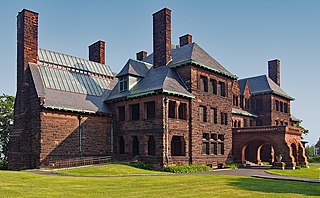
The James J. Hill House in Saint Paul, Minnesota, United States, was built by railroad magnate James J. Hill. The house, completed in 1891, is near the eastern end of Summit Avenue near the Cathedral of Saint Paul. The house, for its time, was very large and was the "showcase of St. Paul" until James J. Hill's death in 1916. It is listed as a U.S. National Historic Landmark, operated by the Minnesota Historical Society. It is also a contributing property to the Historic Hill District.

The Metropolitan Cathedral of Our Lady of the Holy Rosary, commonly known as Holy Rosary Cathedral, is a late 19th-century French Gothic revival church that serves as the cathedral of the Roman Catholic Archdiocese of Vancouver. It is located in the downtown area of the city at the intersection of Richards and Dunsmuir streets.

Saint Thomas the Apostle is an Episcopal church in Hollywood, California.

J. W. Walker & Sons Ltd is a British firm of organ builders established in 1828 by Joseph William Walker in London. Walker organs were popular additions to churches during the Gothic Revival era of church building and restoration in Victorian Britain, and instruments built by Walker are found in many churches around the UK and in other countries. The firm continues to build organs today.
Kilgen was a prominent American builder of organs which was in business from the mid-19th to the mid-20th century.

Wannaska is an unincorporated community in Roseau County, Minnesota, United States.

The Church of St. Barnabas is a Roman Catholic parish church under the authority of the Roman Catholic Archdiocese of New York, located at Martha Avenue near East 241st Street in Woodlawn Heights, The Bronx, New York City. The parish was established in July 1910 by the Rev. Michael A. Reilly, separated from the Bronx parish of St. Frances of Rome. It is one of the largest parishes in the Archdiocese.

Olympic Organ Builders was an importer and custom fabricator of tracker action pipe organs in Seattle, Washington from 1962 through the 1970s. The company built approximately 25 organs for churches and schools located the Puget Sound and Eugene Oregon in the period from 1967 through 1970.
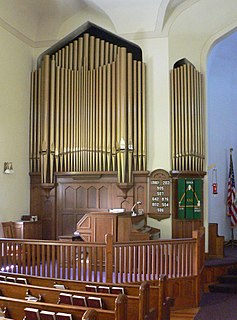
Hinners Organ Company was an American manufacturer of reed and pipe organs located in Pekin, Illinois. Established in 1879 by German-American John Hinners, the firm grew through several partners, becoming Hinners & Fink in 1881, Hinners & Albertsen in 1886, and Hinners Organ Company in 1902. In the 1920s Hinners established a subsidiary, the Illinois Organ Supply Company, which mass-produced parts for Hinners and other firms. Business declined in the 1930s due to the Great Depression, changing technology, and increasing competition. Hinners became a service company in 1936 and closed in 1942.

Trinity Lutheran Church, also known as St. Edward's Catholic Church, is a historic church building located in Henning, Minnesota, United States. The Lutheran congregation was established in 1878. The brick Gothic Revival church was built in 1898. The twin spires on top of the central tower is a unique feature of the building. It was also one of the first structures built in town. Two other Lutheran congregations were founded in the area in the late 19th-century, Norderhaug Norwegian Evangelical Lutheran Church in 1887, and United Lutheran Church in 1896. Those two congregations merged in 1957 and Trinity joined them ten years later, forming Good Shepherd Lutheran Church. St. Edward's Catholic Church acquired the Trinity church building shortly after that. They moved to a new building in 2002 and sold the old church.
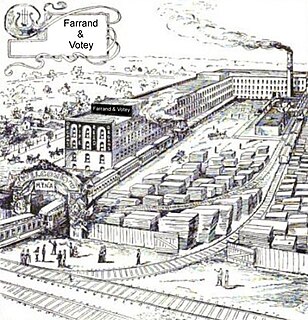
Farrand & Votey Organ Company was a nineteenth-century manufacturer of pianos, reed and pipe organs, and player pianos located in Detroit, Michigan. It evolved from William R. Farrand and Edwin S. Votey, hence the name of Farrand & Votey. The company is the development of the old Detroit Reed Organ Company that was originally bought out in 1881. The Farrand & Votey Organ Company produced 7,200 instruments a year by 1889. The company made huge organs on special order contracts. In 1891 the company built a monumental 2,700 pipe organ for the Detroit's First Presbyterian Church. In 1893 it built a huge organ for the Chicago World's Fair, where it was played in recitals by world-renowned organists. In 1897 it built the nation's largest pipe organ. The company dissolved in 1897 and split up into two separate companies of the owners, each making their own style of organs.
















